Animation &Frame Grabs 01 Jan 2009 09:09 am
Beanstalks
- For New Year’s Day, I’m going to go back to the beginning. My beginning – or at least the day I think I truly came to understand what animation involved and how much I really loved it.
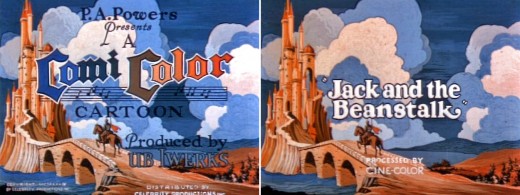
(Click on any image to enlarge.)
I was 12 and had saved my entire summer savings working as a delivery boy for a pharmacist not far from my home. All I made was tips, and the summer had brought me a full $30.
I wanted a projector to watch films. If I was going to make cartoons, I had to have a projector. (Who thought about having a camera to watch them!)
My mother sat down with me – we lived in the Inwood section of far upper Manhattan. She gave me a home-drawn map of the city and told me how I could get there by train. On my own, I took a subway trip to 42nd Street and headed for Peerless Cameras. This was a camera store near Grand Central which would later merge with Willoughby to become Peerless-Willoughby.
They had used 8mm projectors (before the invention of super 8 ), and I intended to go home with one. I did – $25.
Of course, I needed something to project, and Peerless had a VERY LARGE section of entertainment films – 8mm & 16mm. Castle Films distributed many of the Ub Iwerks shorts (most were B&W prints.) They were cut down a bit from the full film, and title cards were edited into them. Obviously, the 8mm projectors and films were silent back then (we’re talking about 1959.)
I’d known the name of Ub Iwerks since I was 8. He was as close to an animation hero as I could muster at that young age. I’d read all about him and knew of the period when he’d had his own studio. There, in Peerless, was Jack and the Beanstalk, and this was the first film I bought.
I felt absolute delight watching that film an endless number of times. The film was, as I said, in B&W, but this actually enhanced some problems old Ub had faced when he started out.
The color paints, for example, weren’t so smooth to lay down. The hand of the bean-seller streaked like crazy and was more obvious in the B&W version. The same was true of the giant’s hand later in the film. Obviously, any time they mixed white into their colors, they couldn’t get it consistent. Terrytoons had this problem well into the 40′s.
It was fun noticing the many elements that made up the film. There were special effects in the film. I’d known that Iwerks was involved in “Special Processes” at the studio (whatever that was – it had to be effects), so you could look at what he did in his own studio. The dark house in the rain storm, illuminated by the lightning was impressive.
Also, the characters were so wacky, you couldn’t help but be entertained by them. The drawing shifted all over the place, but despite the fact that I noticed this – at the age of 12 – I also knew I didn’t mind. You always knew who the characters were even if they went wildly off model.
Every once in a while, there was a hint of a “multiplane-like” effect. When Jack stepped off the beanstalk and onto the clouds, the cel levels move into a position so that the illusion of depth is attempted. It’s handled nicely, I have to say.
Of course, it was a bit of a surprise to find that I couldn’t stop the projector one frame at a time. I wanted to do more than watch the film over and over and over and over and over (which I did.) Eventually, I got tired of this and started tinkering with the machine. I had to be cautious so as not to jar the bulb which could easily burn out and cost me another five bucks.
There was a framing device on the projector. Sometimes the frame line was in the picture and you had to turn this knob to properly frame the picture. By turning this an ungodly number of times, you could actually advance the frames, but you couldn’t see more than about four frames at a time.
That wasn’t quite good enough, so I ultimately started taking the projector apart. I was able to rework the framing mechanism so it could keep going. I was able to watch the film one frame at a time and truly study the animation.
I can’t tell you how many hours I pored over this film.
There was a scene where the giant watches money falling out of the hen’s golden eggs. His one eye follows the coins down (and later follows the rotten egg leaking into the money bag.)
I remembered this scene well when studying some drawings Tytla had done of Stromboli counting his coins. His eyes are similarly loose as they follow the coins to the table, and I wondered if he had known about this giant animation.
Back then, I wasn’t aware that Iwerks hadn’t drawn the entire film by himself. I eventually came to learn that Grim Natwick pretty much ran the studio for quite some time and was replaced, after he’d left for Disney, by Shamus Culhane.
Years later, when I first met up with Grim Natwick, I told him that this film was the very first animated film I’d studied and studied in my goal of becoming an animator. He didn’t offer much of a reaction.
It was a real treat taking this film apart. I started out knowing nothing and soon learned that animation had many decisions and choices behind it. Even today I get a twinge of excitement when I first look at this short – I’m sure it’s as much nostalgia as anything.
In short, it’s all so much easier today. Get a dvd through the mail, look at it on YouTube. Get an animation program like Flash and wallah you’re an animator. There’s no effort. Maybe there was an advantage to having to make an effort.
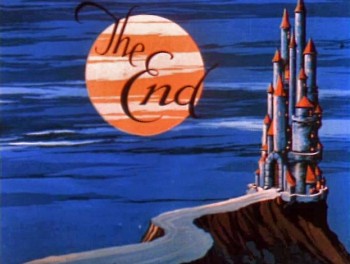
Here’s the link to the YouTube version of the Jack & the Beanstalk.
And here’s the link to vol 1 of The Cartoons That Time Forgot.
Happy New Year
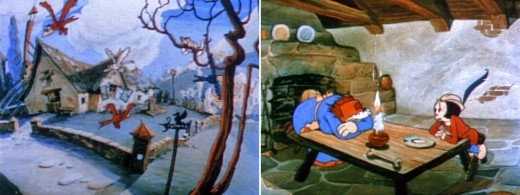
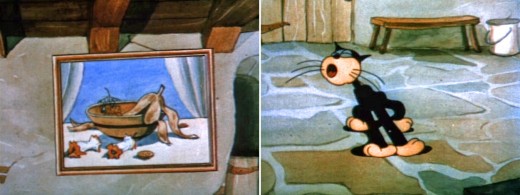
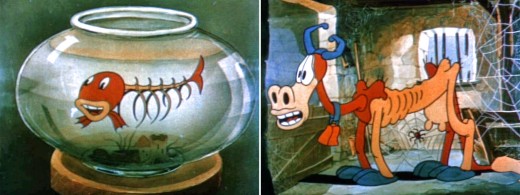
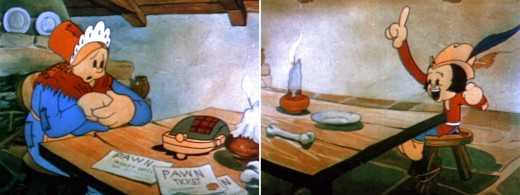
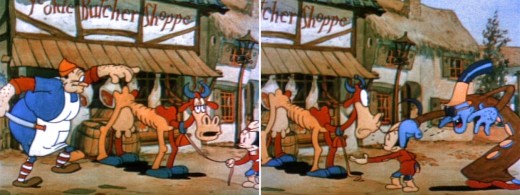
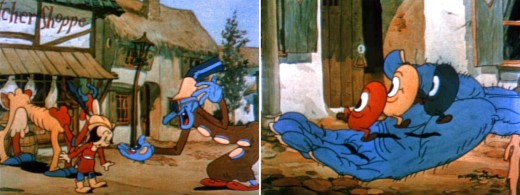
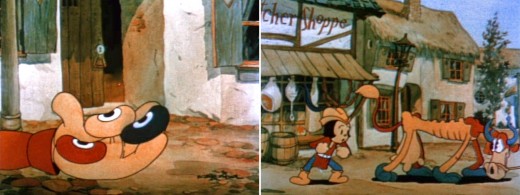
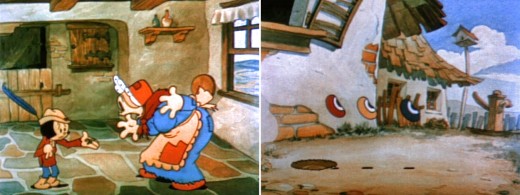
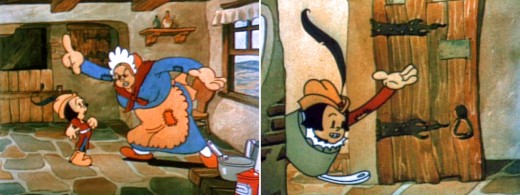
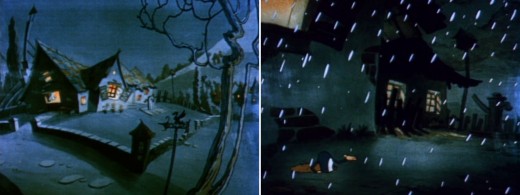
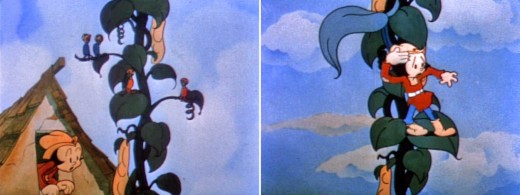
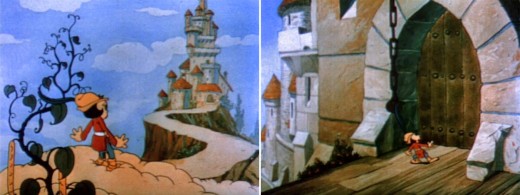
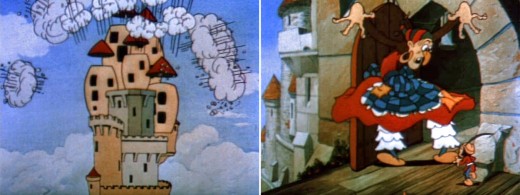
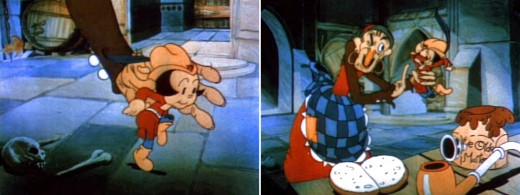
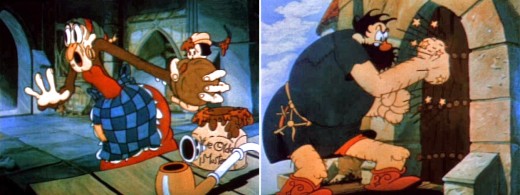
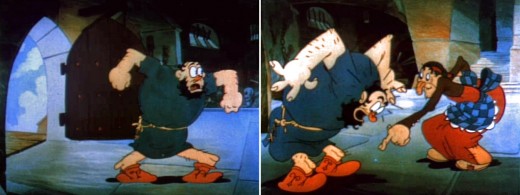
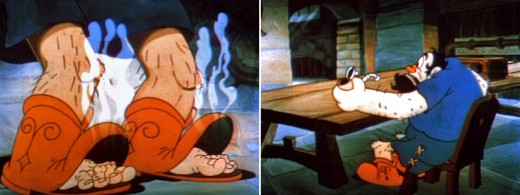
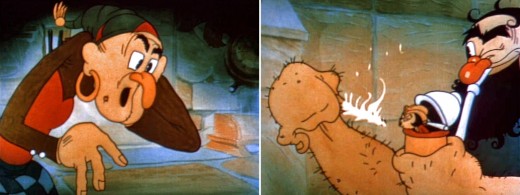
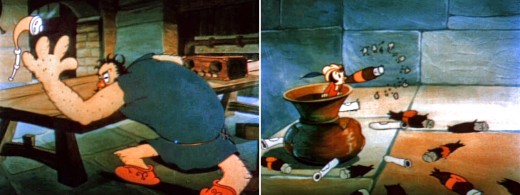
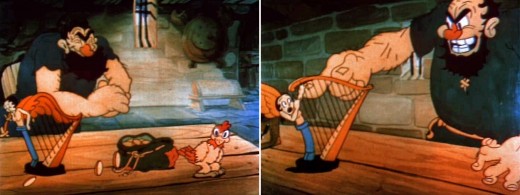
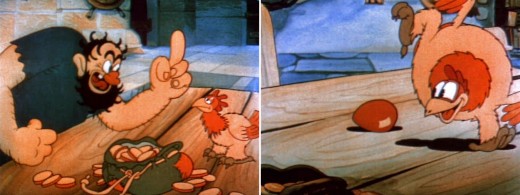
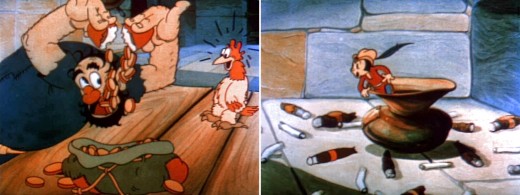
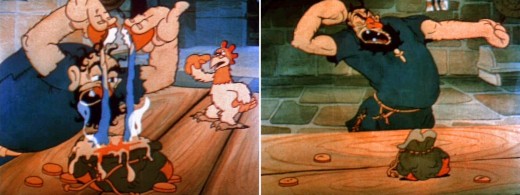
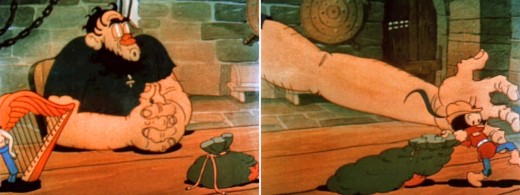
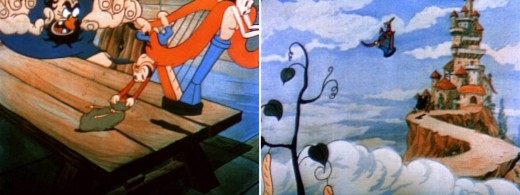
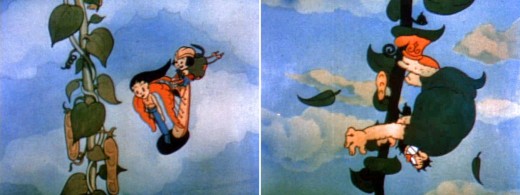
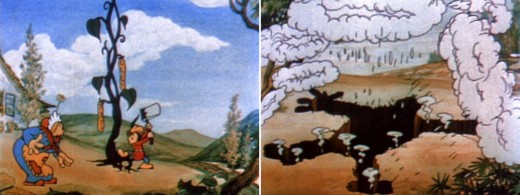
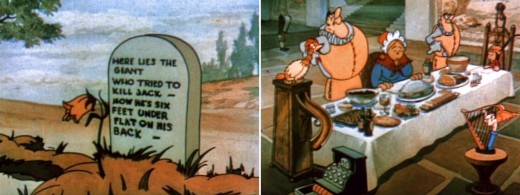

on 01 Jan 2009 at 10:49 am 1.Jason said …
Happy New Year Michael! May it better better then 2008.
on 01 Jan 2009 at 11:56 am 2.Bob Flynn said …
Great post, Michael! I had a chance to see this and many of the Ub Iwerks/Grim Natwick collabs when I borrowed The Cartoons That Time Forgot DVD from a friend (gonna snatch it up on Amazon right now!) I did some frame studies on a number of them.
There is a lot of fun drawing in this one…some great “cartoon” ugly drawings, in particular. The part with the one-eyed beans is a delight, too.
I’ve been reflecting back on my 11-year-old self as well…thanks for sharing your early inspiration with us!
on 01 Jan 2009 at 2:59 pm 3.Eddie Fitzgerald said …
Wow! A terrific post! This is the kind of detail that’s all too often missing from biographies and autobiographies. If this was in a manuscript for a book and I was the editor, I wouldn’t cut a word, and I’d keep all the frame grabs in!
Something about this reminds me of Disraeli’s famous essay, “Beware the Man of One Book.” He said the man who has enthusiastically read and re-read one book is a powerful opponent, even if you’re not talking about the subject the book was about. A man who’s taken the trouble to understand another’s argument in detail has a trained mind, and is to be feared.
I can’t help thinking that animation and film is like that. If you enthusiastically study one film in detail (maybe especially at the impressionable age of 12), then the experience stays with you for the rest of your life, and informs everything that you do.
on 01 Jan 2009 at 5:26 pm 4.Tom Minton said …
Iwerks may well have had trouble with paint pigments not blending with white but Terrytoons cartoons frequently looked like Paul Terry was watering cel paint to save money.
on 02 Jan 2009 at 5:15 am 5.Tom Stathes said …
Michael,
Happy New Year!
And thanks for this wonderful post… as you know, I came along in this world much later than when you did. Jack and the Beanstalk was also a childhood favorite of mine, since my toddler years practically, when I had it on one of those junky public domain videos.
I did not look into the technical side of it so much and still don’t have a film print of this particular title, but it resonated with me as well. Sort of sad story…the VHS in question was always at my grandmother’s apartment which was lost to a fire when I was 7…. it was not until a few years later, being slow with buying DVDs (I still don’t own a LTGC set- film prints more worth buying to me) that I actually found a copy of the public domain video again- gosh, it can be hard to track certain ones down if you actually go looking for them. So the film was also sentimental and tragic for having lost my copy to fire…certainly was mellowing to see it again in the old, dark cinecolor print on that tape as a teenager.
Keep up the great blog posts…and hopefully I will post some interesting ones again soon.
Tom
on 02 Jan 2009 at 7:34 am 6.slowtiger said …
Memory time … My first projector was not my own, but friends lend it to me. It was a “Dux Kino 68″ (see http://de.wikipedia.org/wiki/Dux_Kino), working with 8mm film in endless loops. We had only one Donald Duck film, and it was cut down to approx. 2,5 minutes – I think it even left out every second frame of the original, but this is just from memory. Watching it frame by frame was no problem because of the hand crank and the very low bulb – we always had to set up our little cinema under a table, further darkening it with blankets.
Later my father bought a simple Super8 camera which I used for animation although it had no single frame trigger. When I was 15 I got a “Bauer C2″ (http://www.alphasensory.com/Skatetown/BauerC2.html) and seriously started with animation. I think I made every possible mistake then: not fixing the exposure, not focusing, not having fixed the camera on its tripod, getting the pushpins inside the frame, and so on – not to talk about my animation! I always thought this experience helped me a lot when I started to work in a real studio later.
Re-reading this I notice that I seem to be much more interested in the technique than into animation. That’s why I often end in setting up animation software or make anything work for others …
on 22 Feb 2009 at 8:19 am 7.Kellie Strøm said …
I hope you don’t mind Michael, but I’ve been making money out of your blog!
on 22 Feb 2009 at 8:56 am 8.Michael said …
Très cute.
on 04 Mar 2010 at 6:11 am 9.animationen said …
Er zijn veel animatiefilms over de jaren en dit is niet Te verwarren met de Meer gebruikte stop animatie. Model animatie is een vorm van de stop-motion animatie, maar het is ontworpen Om Te fuseren aan bij de live animationen action beelden Om een illusie van een echte wereld volgorde te maken. Dus wat zijn de beste die ooit gemaakt
on 05 Jan 2017 at 6:02 am 10.transitus-gebrauchtmaschinen said …
Hey Hallo! Ich hätte schwören können, ich habe zu diesem Ort gewesen Überprüfung durch einige der post wurde mir klar, es ist neu für mich. Jedenfalls, ich bin auf jeden Fall froh, dass erfreut fand ich es, und ich werde sein Buch-Kennzeichnung und die Kontrolle zurück häufig !
on 18 Sep 2018 at 3:42 pm 11.ê²€ì¦ì‚¬ì´íŠ¸ said …
But it does not create a great deal of sense that Durer
would be copying the Italian artists in this manner for he was only
a regional artist at this stage in time. When hiphop music
doesn’t seem to leave your whole body and you have the calling to produce your own personal, you will want to utilize the affordable and most complete beat making software out there today.
Remember if you love one artwork and it is too costly on your taste or pocketbook there’s surely another
painting which is similar and will fit your budget.